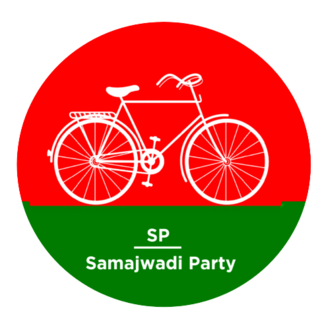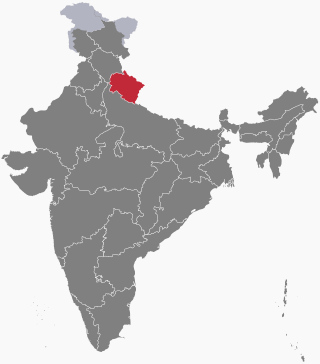
The Samajwadi Party is a socialist political party in India. It was founded on 4 October 1992 by former Janata Dal politician Mulayam Singh Yadav and is headquartered in New Delhi. The Samajwadi Party is currently led by former Chief Minister of Uttar Pradesh, Akhilesh Yadav. It is centrally managed by Daksh Yadav .As of 2024, it is currently the third-largest political party in India, and the largest party in Uttar Pradesh.
In India, Official Opposition designates largest party not supporting the ruling cabinet in the Parliament of India or a State or Territory Legislative Assembly. To get formal recognition in either upper or lower houses, the concerned party must have at least 10% of the total strength of the house. A single party has to meet the 10% seat criterion, not an alliance. Many of the Indian state legislatures also follow this 10% rule while the rest of them prefer single largest opposition party according to the rules of their respective houses.
The State Legislative Assembly, or Vidhan Sabha, also called Vidhana Sabha, or Saasana Sabha, is a legislative body in each of the states and certain union territories of India. In 28 states and 8 union territories, there is a unicameral legislature which is the sole legislative body. In 6 states, the legislative assembly is the lower house of their bicameral legislature with the upper house being the State Legislative Council. 5 union territories are governed directly by the Union Government of India and have no legislative body.
A member of the Legislative Assembly (MLA) is a representative elected by the voters of an electoral district (constituency) to the legislature of State government in the Indian system of government. From each constituency, the people elect one representative who then becomes a member of the Legislative Assembly (MLA). Each state has between seven and nine MLAs for every Member of Parliament (MP) that it has in the Lok Sabha, the lower house of India's bicameral parliament. There are also members in three unicameral legislatures in Union Territories: the Delhi Legislative Assembly, Jammu and Kashmir Legislative Assembly and the Puducherry Legislative Assembly. Only a Member of the Legislative Assembly can work as a minister for more than 6 months. If a non-Member of the Legislative Assembly becomes a Chief Minister or a minister, he must become an MLA within 6 months to continue in the job. Only a Member of the Legislative Assembly can become the Speaker of the Legislature
Union Government of India are the governments ruling over 28 states and 3 union territories of India and the head of the Council of Ministers in a state is the Chief Minister. Power is divided between the Union government and state governments. While the Union government handles defence, external affairs etc., the state government deals with internal security and other state issues. Income for the Union government is from customs duty, excise tax, income tax etc., while state government income comes from sales tax (VAT), stamp duty etc.; now these have been subsumed under the various components of the Goods and Services Tax
The elections in 2012 were scheduled for seven Vidhan Sabhas and several local elections were also conducted. The 14th presidential election to elect the 13th president of the republic was also held in 2012. The tenure of the legislative assemblies of Goa, Gujarat, Himachal Pradesh, Manipur, Punjab, Uttar Pradesh and Uttarakhand were to expire during the year. The Election Commission of India issued the dates for the elections in Manipur, Punjab, Uttarakhand, Uttar Pradesh and Goa to take place in the first quarter of the year. Whereas the elections were held in Himachal Pradesh and Gujarat in the last quarter of the year.

Elections for the Uttarakhand Legislative Assembly in Uttarakhand state, India are conducted in accordance with the Constitution of India. The legislative assembly of Uttarakhand creates laws regarding the conduct of local body elections unilaterally while any changes by the state legislature to the conduct of state level elections need to be approved by the Parliament of India. In addition, the state legislature may be dismissed by the Parliament according to Article 356 of the Indian Constitution and President's rule may be imposed.
Between 1952 and 2020, two seats were reserved in the Lok Sabha, the lower house of the Parliament of India, for members of the Anglo-Indian community. These two members were nominated by the President of India on the advice of the Government of India. In January 2020, the Anglo-Indian reserved seats in the Lok Sabha and state legislative assemblies of India were discontinued by the 126th Constitutional Amendment Bill of 2019, when enacted as the 104th Constitutional Amendment Act, 2019.
















